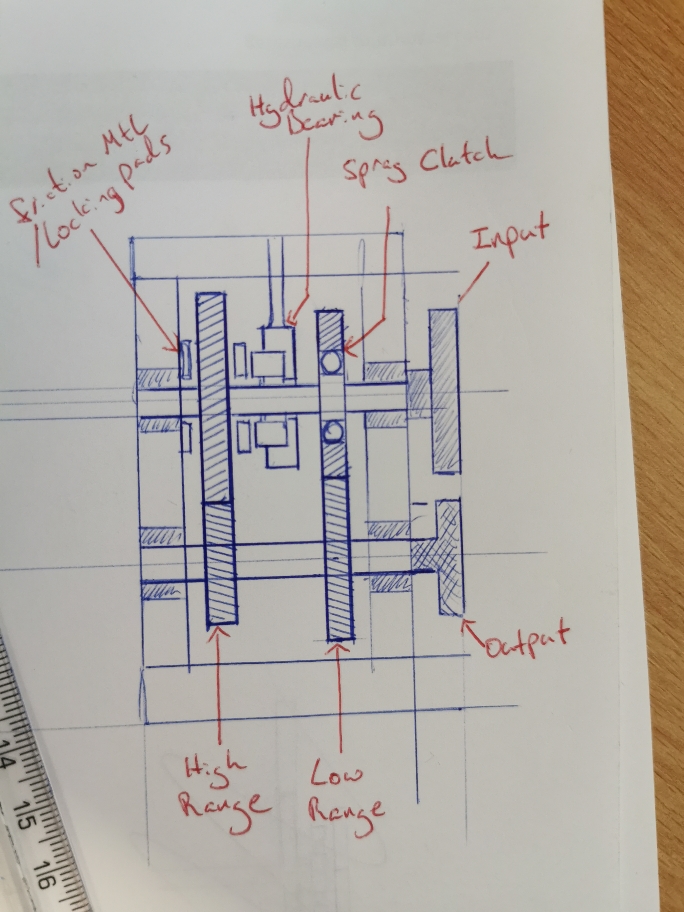Full disclosure: I'm a mechanical engineer /hobbyist motorcycyle builder starting to design a bike from the ground up as a long term project. I have searched through the forum for subjects related to transmissions, but other than a few dead ends, it doesn't seem to be a widely discussed topic.
We have motors capable of providing impressive power in a relatively small package. All small/medium e-motorcycles I've come across tout impressive acceleration but lack the top end/cruising ability of equivalent IC motorcycles.
With the power available, why is there no widely available two speed gearboxes on the market that could both improve low end acceleration and top end speed /efficiency?
A small, high torque gearbox shouldn't be too hard to put together, or be particularly heavy if well designed. The attached sketch is one example that should work, the only downside I can see is that regenerative breaking wouldn't work in the first gear due to the sprag clutch, but that could be overcome by automatically engaging the second gear under deceleration. A clever control circuit could also rev-match the motor input to the second gear speed to help with engagement.
So I guess my question is: why aren't transmissions more widely used in e-motorcycles, am I missing something?

Sent from my VOG-L29 using Tapatalk
We have motors capable of providing impressive power in a relatively small package. All small/medium e-motorcycles I've come across tout impressive acceleration but lack the top end/cruising ability of equivalent IC motorcycles.
With the power available, why is there no widely available two speed gearboxes on the market that could both improve low end acceleration and top end speed /efficiency?
A small, high torque gearbox shouldn't be too hard to put together, or be particularly heavy if well designed. The attached sketch is one example that should work, the only downside I can see is that regenerative breaking wouldn't work in the first gear due to the sprag clutch, but that could be overcome by automatically engaging the second gear under deceleration. A clever control circuit could also rev-match the motor input to the second gear speed to help with engagement.
So I guess my question is: why aren't transmissions more widely used in e-motorcycles, am I missing something?

Sent from my VOG-L29 using Tapatalk

